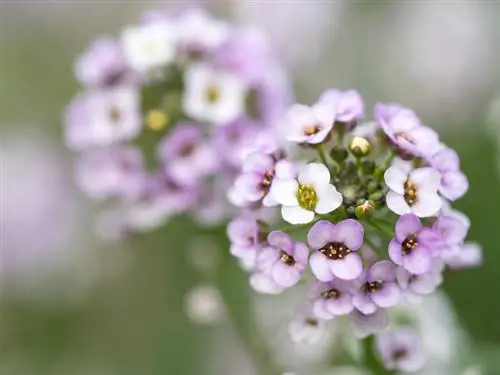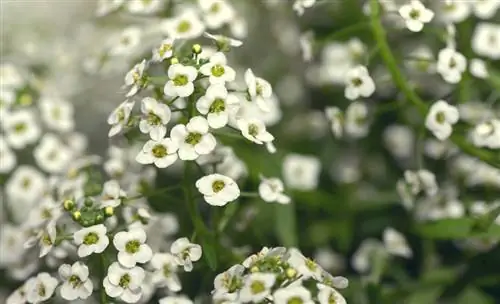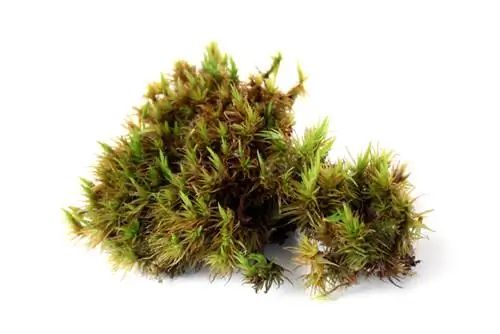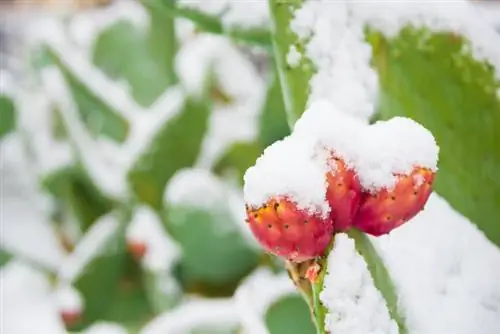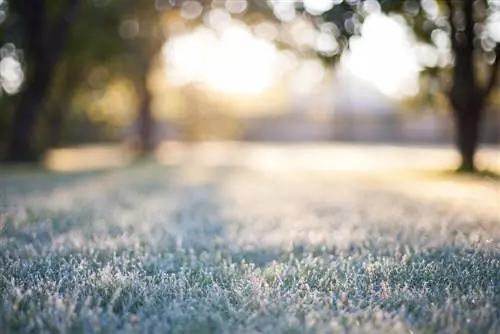- Author admin [email protected].
- Public 2023-12-16 16:46.
- Last modified 2025-01-23 11:20.
The alyssum - a ground cover with compact growth, low maintenance requirements and the ability to survive dry periods well. But when winter approaches, the alyssum looks like
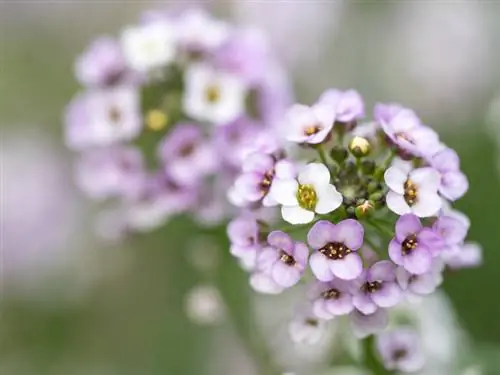
Is the alyssum hardy?
Alyssum is perennial in its native region, but is not hardy in colder areas such as Germany. However, it can be overwintered indoors or re-grow next season by self-seeding.
Poorly hardy in this country
This plant, which comes from warmer climes, is unfortunately not hardy in our latitudes. Alyssum, as the stone herb is also called, is perennial in its homeland, but is only cultivated as an annual in this country. Even low temperatures below 0 °C mean its certain end. The fine roots that are close to the surface freeze.
Can you overwinter the alyssum indoors?
If you don't have a garden, you might want to plant your alyssum in a pot on the balcony or in the balcony box. The stoneweed doesn't survive the winter there either. But it can be overwintered indoors. To do this, cut the plant down by 2/3 in autumn and place the pot in a frost-free, but cool and bright location in the apartment.
Cut down, pull out and compost in autumn
How to deal with alyssum when autumn arrives:
- cut close to the ground between the end of September and October
- alternatively pull it out of the ground
- Dispose of plant parts
Survival strategy: self-seeding
You planted the alyssum and it sprouts in spring every year? It seems to be well winter-hardy, doesn't it? If you're not mistaken, stoneweed knows how to reproduce cleverly and thus survive across generations.
Its seeds ripen from September/October - provided you haven't cut off the old flowers. The seeds fall when ripe and overwinter in the soil. In spring they are encouraged to germinate. The magic word is self-sowing. Presto, a new alyssum plant appears without you noticing.
Tip
Before you dispose of the alyssum on the compost in autumn, it is advisable to shake the plant a little in the desired location for the coming season. This causes the seeds to fall out. With luck they will germinate in spring.

